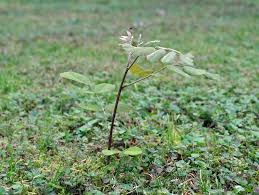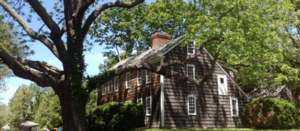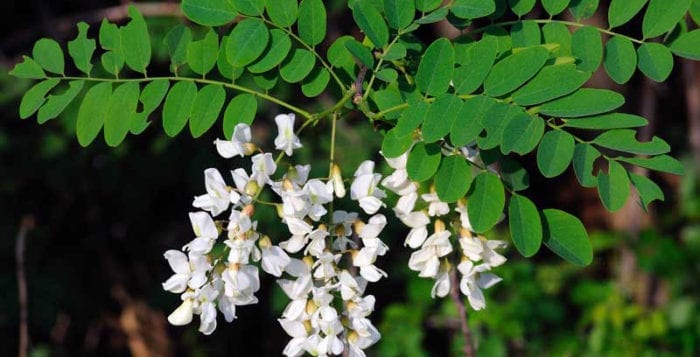By Kyrnan Harvey
Do you love flowers and wish you had a garden full of many kinds? Frustrated because the peonies and roses and irises disappoint with few flowers, the phlox is floppy with powdery mildew and even the yarrow craps out? Did you plant a row of rhodies under some random trees, but they are starting to get leggy? Have you despaired because there is too much shade, and even where there isn’t the digging requires too much effort because of tree roots? You can have a garden with many beautiful flowers in light shade, but excessive shade and greedy tree roots are the most prohibitive obstacles to fulfillment for weekend gardeners.
Whenever I visit a new client, I will first evaluate which trees are beneficial assets, which should be removed, and which should be pruned to let in more light, to open up more volumes of airspace for other large shrubs and small trees or to eliminate root competition for water and nutrients.

I almost always keep oaks — red, white, black — and there are no-brainer keepers like ornamental cherries, dogwoods and magnolias of course. But most properties have trees that are far less desirable: not only native invasives like black cherry, black locust and black walnut, but also exotic invasives, most commonly the Norway maple. I value this last for its yellow fall color, and we have a very old, large one, venerable with bole, trunk and branching structure near our kitchen door. We eat al fresco all summer under the cool of its generous shade, no umbrella needed. I wouldn’t attempt to plant under it and of course the fallen leaves require a lot of blowing and raking, but they do make for a fun leaf pile for kids.
However, Norway maples typically generate hundreds of seedlings every spring. Give them a few seasons to root in and they will require effort to pull up. In a neglected side yard or corner of property these will grow into substantial trees even when still young. I often see groups of five or 10 or more of these “volunteers,” often misshapen and ugly because they are crowding each other, and often they are hosting suffocating vines like English ivy, bittersweet and grape.
Sure, these messes provide privacy from “that” neighbor or a buffer from the road, but, once removed, you will delight in views of the sky and you will enjoy the new light. I always recommend these weed trees be removed, the sooner the better, because the bigger they get the more expensive.

Sometimes one sees a truly wonderful and photogenic old black locust, gnarly in the winter landscape, or a black walnut, such as the one in front of the Sherwood-Jayne House in East Setauket, with horizontal lateral limbs the length of a schoolyard basketball court. But an old walnut will drop soggy catkins on your driveway in June and later many hundreds of green-rinded, golfball-sized nuts that need to be hand-picked off lawns. It had better be a truly awesome tree or else you will hate its nuisances.
The black cherry is especially worthy of contempt. It too becomes very large with inconspicuous white flowers. The leguminous white flowers of the black locust have underrated appeal, but their malodorous roots keep running dozens of yards from the trunk and throw up viciously thorny suckers. This is not an easy root to slice with a spade, because it, like the roots of mulberry (weed!) and wisteria (invasive but worth it), are of some kind of elastic constitution: My sharp steel-shafted spade literally bounces off the roots.
But back to flowers and gardens. Remove junk trees and you will have new opportunities, or “capabilities,” to dream and to plant. Get rid of them, with their beastly roots and unwanted shade and messy litter. You are not being anti-environment, or anti-wildlife, especially if you replace thickets of bittersweet, honeysuckle and Ailanthus from Asia with American dogwoods, or a sourwood (Oxydendrum), or Eastern redbuds, or even a grove of Japanese maples, which are in scale with smaller gardens.
In a client’s garden we have let many self-sown Japanese maples grow. Now, after a dozen years, they provide light shade and beautiful autumn tapestries of yellows and reds and oranges. It is much easier to underplant Japanese maples — or birches — with lawn or perennial ground covers than it is under mature Norway maples or to remove that suckerous tree of heaven and start planning your little sun-loving kitchen garden of quadrants of thyme and sage, tomatoes and dill, with a cute gate and brick paths.
Kyrnan Harvey is a horticulturist and garden designer residing in East Setauket. For more information, visit www.boskygarden.com.





